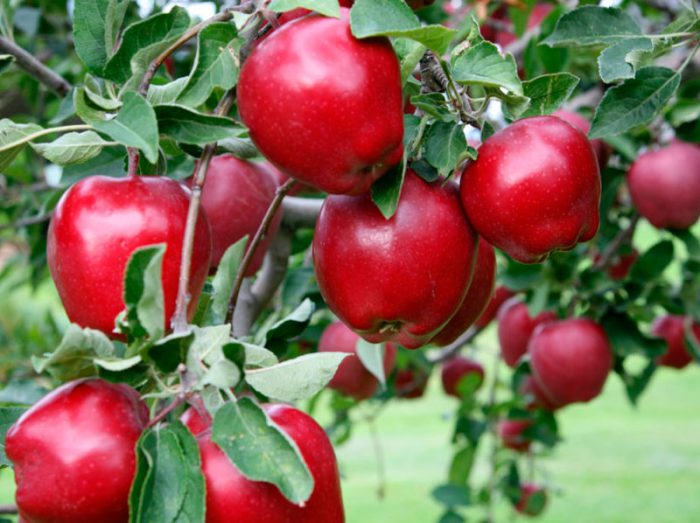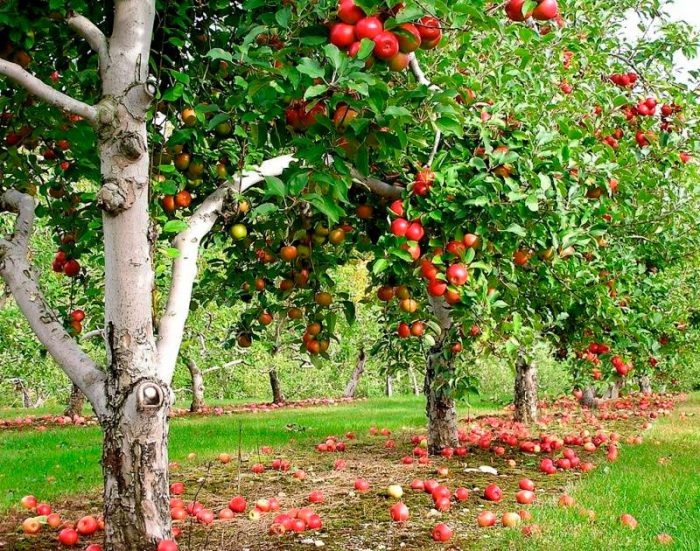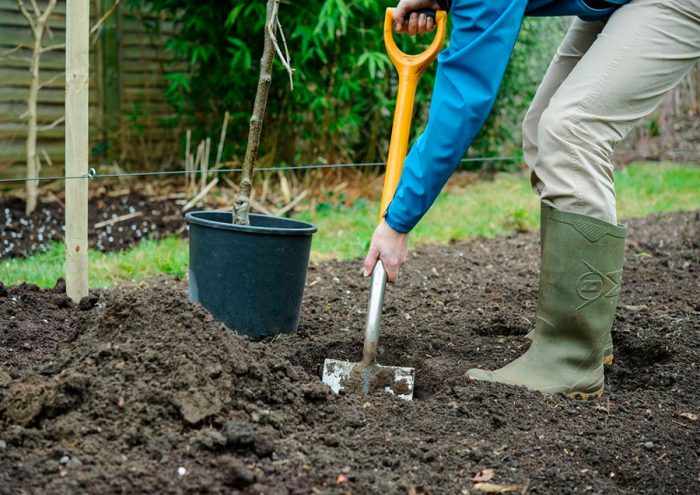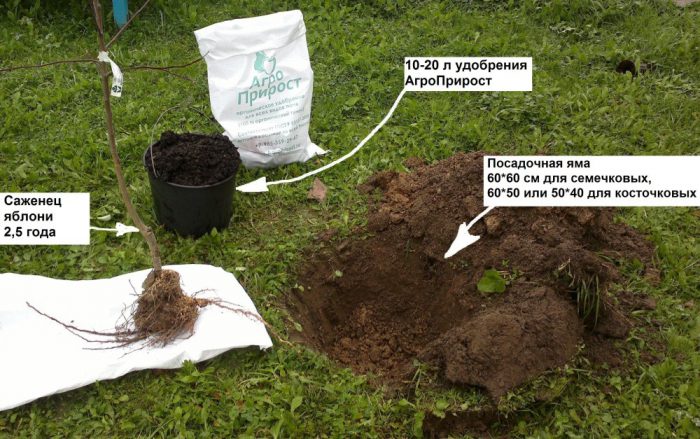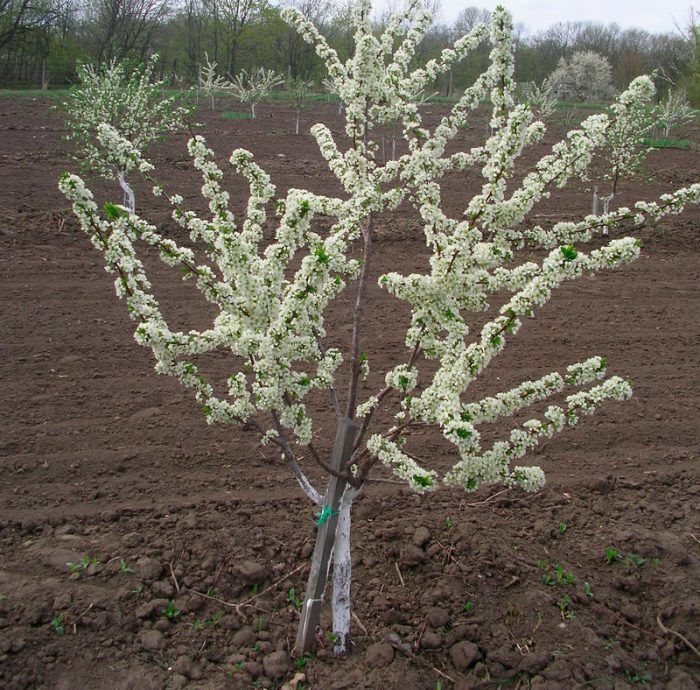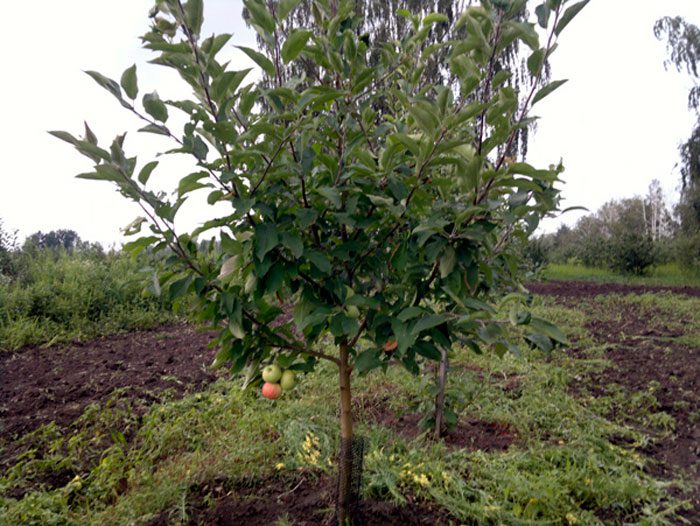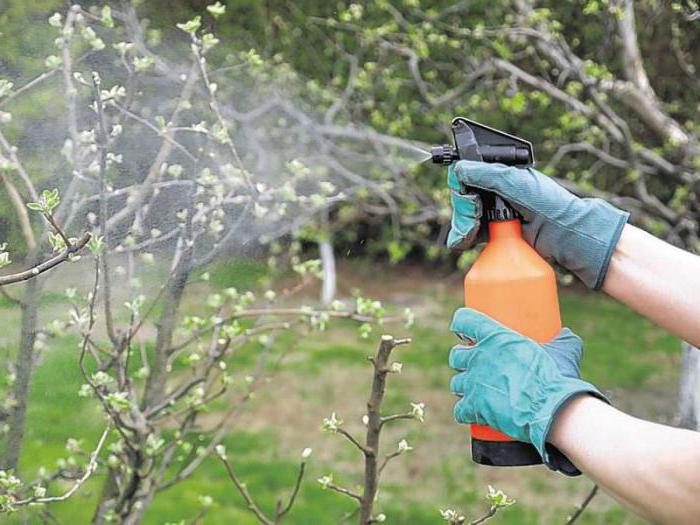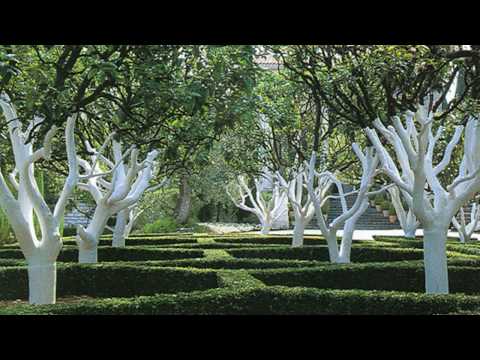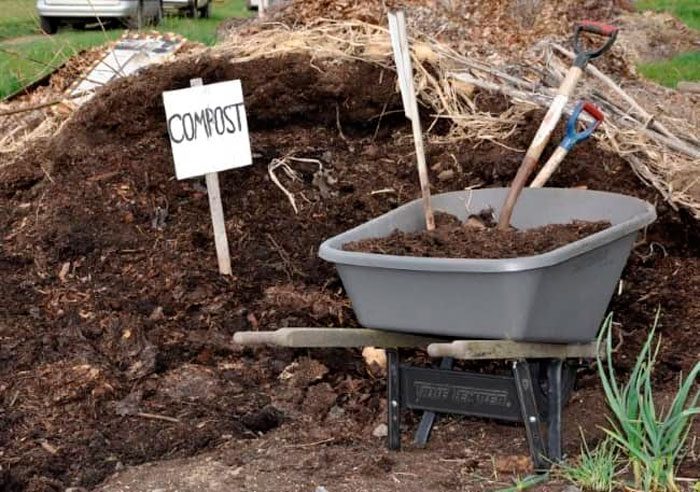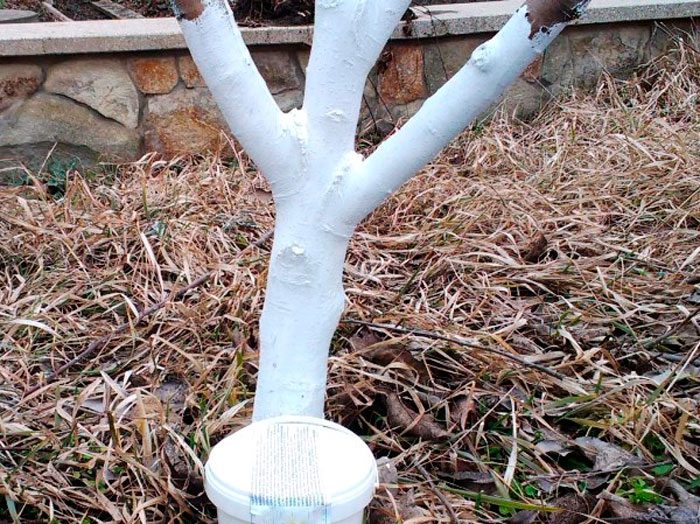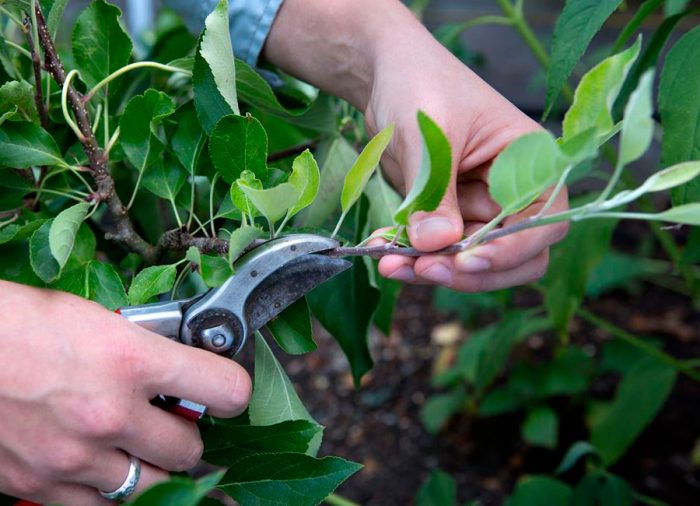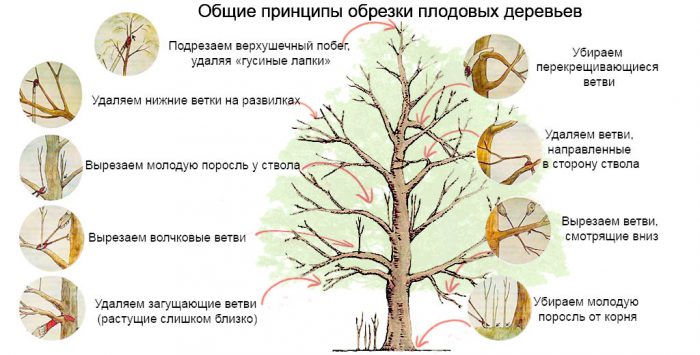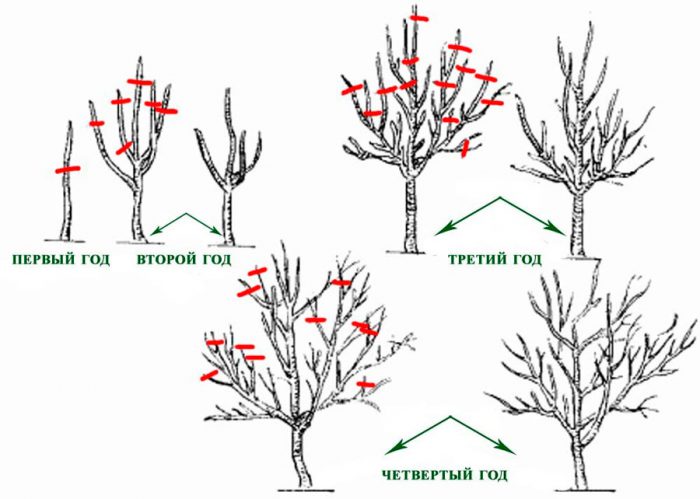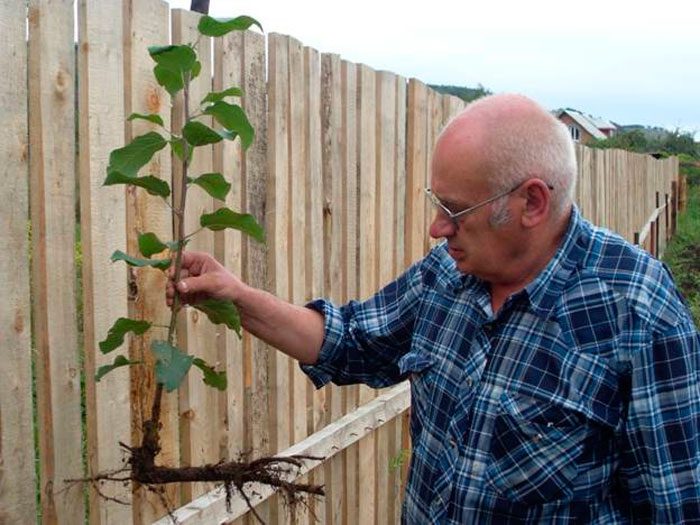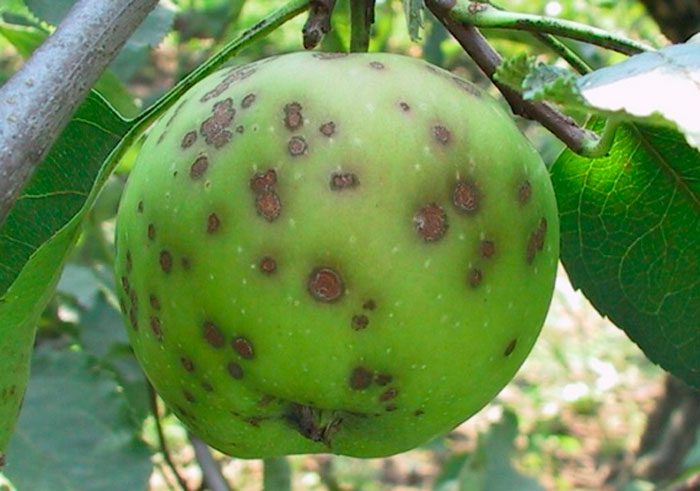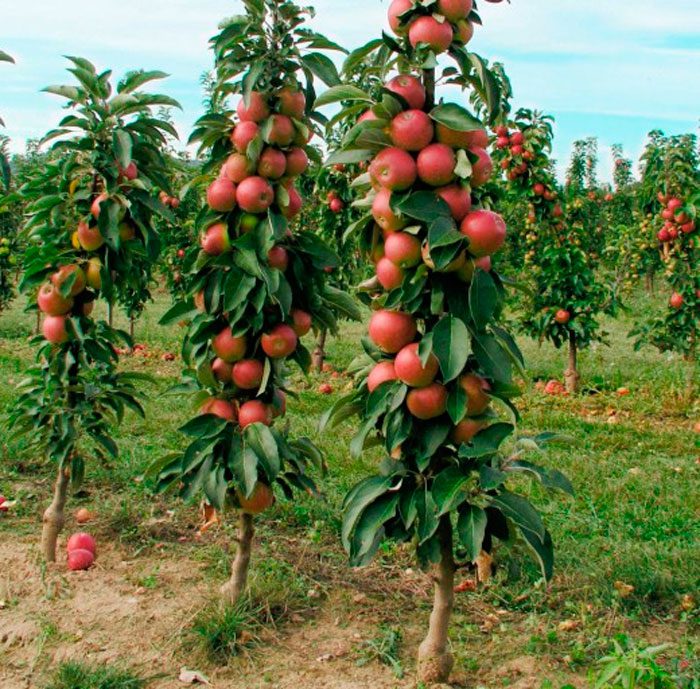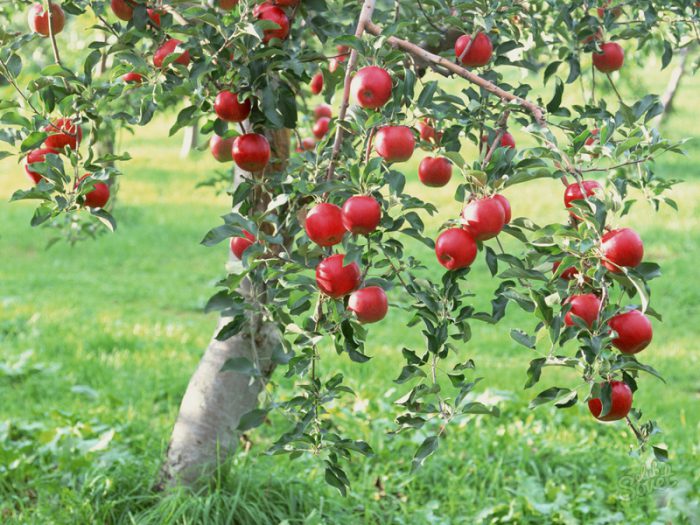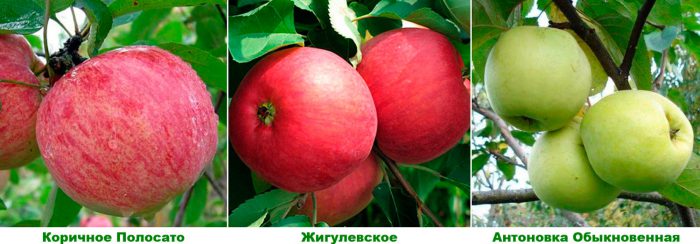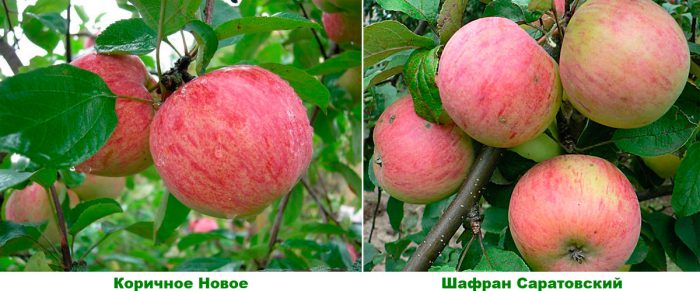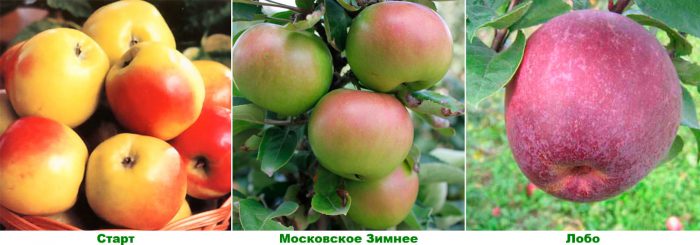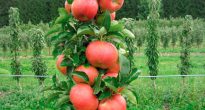A type of fruit tree such as the domestic apple (Malus domestica) is a representative of the Apple genus of the Pink family. This species is widespread, it is cultivated in many garden plots, as well as on an industrial scale to obtain delicious fruits. A large number of tales, songs, legends and tales, as well as other works of oral folk art, have been created about apples and an apple tree. For example: an apple of discord, which became one of the reasons for the outbreak of the Trojan War; the first people were expelled from Paradise to Earth because of the apple of knowledge; the law of universal gravitation was born after an apple fell on Newton's head ... There are many more examples. Probably it will be very difficult to find that person who does not like tasty and aromatic apples, delicious jam, drinks and various dishes are prepared from this fruit. Apples contain many nutrients and vitamins. The apple tree has been cultivated by man for a very long time, and for many hundreds of years it has not lost its popularity.
Content
Features of the apple tree
The apple tree is a tree whose height can vary from 2.5 to 15 m. Its crown is spreading. There are 2 types of branches on the tree: growth ones, which are elongated, and fertile ones, shortened, it is on them that flower buds are formed. Wild species have thorns. Petiole leaf plates can be naked or have pubescence on the seamy surface. The color of the flowers depends on the variety and can be pale pink, white or crimson. They are collected in not very dense inflorescences of a semi-umbilical and corymbose shape. Flowering lasts about half a month and begins in April – May. Pollination in flowers is cross. The fruit, called an apple, is formed from the lower ovary. This plant is among the durable, in the wild it can live for about 300 years, and in the garden area - up to 100 years. Usually, this culture begins to bear fruit no earlier than at the age of four.However, there were cases when fruiting began in the year of planting or at 11 years old. The duration of the productive period of the apple tree is 40-50 years. This plant is resistant to frost, it is not afraid of a decrease in air temperature to minus 42 degrees. Also, this culture is an excellent honey plant.
Planting an apple tree in open ground
What time to plant
Planting an apple tree in open soil can be carried out in the spring as well as in the autumn. But before you start planting, you need to choose the most suitable place for such a plant. A suitable site should be open and free of powerful drafts, there should be no buildings or other trees next to it. Experts advise avoiding planting a young tree with old ones, since the latter will take nutrients from the apple tree, and also block it from the sun's rays. The soil must be fertile, not very acidic, otherwise you will have to extinguish it using lime. It should contain nitrogen, which the plant needs for normal growth and fruiting.
It is equally important to choose a good seedling for planting. It is purchased just before planting in open ground, while choosing a plant with an open root system that can be thoroughly examined is better. It is not recommended to purchase seedlings in containers or pots. The fact is that they can be sold in this way for several seasons, while their root system has long filled the container and is strongly intertwined, and various pests can also start in it under such conditions. In some cases, unscrupulous sellers offer to buy an apple tree, supposedly grown in a container, but in fact recently dug up, from which the extra roots were cut off with a shovel, and then squeezed into this tight container. Whether the seedling will be able to take root after this is a big question. Therefore, it is better to purchase a plant with an open root system, the buds of which have not yet swollen. The main criterion in choosing an apple tree is the state of its roots. If the apple tree is dwarf, then its root system looks like a loofah, consisting of thin and small roots. If the species is tall, then it has several strong roots located vertically. The roots on the cut must be necessarily white, if they have a different color, this indicates the presence of rot or other disease. You should also carefully examine the aerial part of the plant. If the seedling is one year old, then it should have only 1 stem-twig, the height of which can vary from 100 to 200 cm, while it should not have a single lateral branch. When purchasing a two-year-old dwarf apple tree sapling, it should have 3-5 skeletal branches, and a tall species - 2 or 3. The purchased seedling should be prepared for planting on the site. To do this, you need to remove all the injured and diseased roots, after which the wounds and cut sites must be treated with crushed coal. Then the root system is gently spread out. Pay attention to the kidneys, they should be at rest.
Planting an apple tree in autumn
A pit for planting this culture should be prepared in advance. For spring planting, the pit is prepared in the fall. If planting is scheduled for autumn, then the pit should be prepared at least 4 weeks before the day of planting, during which time the soil will settle in it quite well. In the autumn, planting an apple tree is done after the leaf fall ends. At this time, the part of the plant located above the ground is dormant, but intensive root growth is noted. Try not to disturb the plant too much. The size of the pit should be 0.5x0.5 m, while its depth depends entirely on how long the root system of the planted tree is.A rather long stake should be installed in the middle of the pit, which will rise about 150 cm above the surface of the site. The prepared plant root system should be placed in a hole, which is carefully filled with nutritious black soil. It should be noted that after planting, the root collar of the apple tree should be flush with the surface of the site. After the soil in the near-stem circle is well compacted, the seedling will need abundant watering. Then he is tied to a support. When the liquid is completely absorbed into the soil, then the trunk circle can settle, in which case more soil is poured into it. During autumn planting, the soil should not be mixed with any fertilizers, as this can cause the buds to awaken before winter, which can cause the seedling to freeze. When a steady cold comes, if you wish, you can scatter a complex mineral fertilizer around the plant, while you need to retreat from the trunk about 0.6 m.When the snow cover melts in spring, the melt water will dissolve this fertilizer and carry it into the soil directly to the root seedling system.
Spring planting
A very large number of gardeners prefer to plant an apple tree in the spring. Prepare a pit for planting the same size as in the fall. A small amount of fertile soil must be poured into it, which is combined with 500 ml of wood ash. Then 10 liters of water is poured into the pit and everything is thoroughly mixed. The root system of the plant should be immersed in the resulting chatterbox, which is well straightened. After that, the pit is filled with fertile soil almost to the top. Then another 10 liters of water is poured under the plant. When the liquid is absorbed, the pit must be completely filled with soil, while its surface should be flush with the surface of the site. Make sure that the root collar is flush with the surface of the site. The very last portion of soil must be combined with any complex fertilizer, for example, "Universal Ideal".
Caring for an apple tree seedling in the first year of life
How to care in springtime
Growing an apple tree takes time and patience. It doesn't matter in the fall or in the spring an apple tree was planted, caring for a young tree begins in the first spring. If everything is done correctly, then it will grow powerful and healthy, while an adult apple tree will be able to cope with a variety of problems on its own. It is very important not only to plant this crop correctly, but also to pay special attention to care in the first year of growth. The yield and health of the apple tree for many years depends on how correctly everything will be done. When the seedling is planted in open ground, it is necessary to shorten its trunk by 2 or 3 buds, this will stimulate the growth of lateral shoots. If the planted plant already has skeletal branches, then it should be remembered that they should be shorter than the central shoot. If these branches are longer than the central shoot, they will need to be shortened. A freshly planted apple tree for the first 5 or 6 weeks will need systematic watering. To do this, pour 10 liters of water under the seedling 1 time in 7 days. But if there is a large amount of rain in the spring, then there is no need to water the tree. After 1.5 months, the plant will need to be watered once every 15–20 days. However, if there is strong heat, then the number of waterings will need to be increased to two times in 7 days. The volume of water used for watering the seedling should also be increased, now at a time 20–30 liters of water will need to be poured into the near-trunk circle. The surface of the trunk circle must be covered with a layer of mulch (biohumus, rotted manure, compost or chicken droppings). On top of the mulch, a layer of straw or dried grass should be laid, the thickness of which should be 50 mm. This shelter contributes to the creation of suitable conditions for the life of earthworms.Such worms contribute to loosening and fertilizing the soil to a depth where the roots of the plant feed. As a result, the soil will become light and rich in nutrients. In addition, the mulch layer prevents weeds from actively growing, which significantly reduces the number of weeding.
All flowers that appear during the first two years should be removed, because they greatly weaken the apple tree. In May, the plant will need 2 foliar dressings, for this use a solution of Effekton or sodium humate (1 large spoonful of any of the indicated means is taken for 1 bucket of water). 1 seedling takes about a couple of liters of solution.
How to care in summer
After establishing the watering regime, the apple tree does not need special care until the onset of the autumn period. All summer, it will need to be systematically watered and, if necessary, deal with harmful insects. If pests have settled on the plant, then you can not use various harmful chemicals, birds can replace them, which should be attracted to the garden plot. To do this, you need to make titmouses and bird feeders on the tree, in this case the birds will know that there is food on the apple tree. The arriving birds will destroy the harmful insects that have settled on the tree. While the tree is small, the pests that have settled on it can be collected by hand, and in this case you will not need processing at all.
On hot days, you can use the sprinkler method to water the plant. Watering is carried out in the evening, since drops that fall on the foliage can leave burns on them in sunlight.
To improve air access to the root system of a tree, it is necessary to make several punctures around it in different places, while 0.6 m must be retreated from the trunk.The depth of punctures in the soil can vary from 0.3 to 0.4 m.
A couple more foliar dressings are carried out in June, for this, a solution of Effekton or sodium humate is also used. On the surface of the trunk circle in July, you should scatter 2 glasses of wood ash just before watering.
How to care for the fall
In autumn, the tree needs to be spud to a height of 15 to 20 centimeters. The surface of the trunk circle must be covered with a layer of mulch (peat, humus or compost). The trunk of a young apple tree must be whitewashed using a chalk solution. If in the region where this crop is grown, there are hares that can damage the bark of young plants, then to protect them, the trunks should be wrapped with reeds or spruce branches. What fertilizers are used to feed an apple tree in autumn? In the first year of growth, it is not necessary to feed the plant, because the organic fertilizer contained in the mulching layer will be quite enough.
Apple tree care
Apple tree processing
If harmful insects settle on an adult apple tree, then it will be almost impossible to rob them all to one. In this regard, it is necessary to regularly resort to preventive treatments of the tree with chemical preparations against diseases and pests. This treatment is carried out in the spring before sap flow begins, while the air temperature outside should be at least 5 degrees. To prepare the solution, mix 1 bucket of water and 0.7 kg of urea. With this solution, you need to thoroughly process the entire plant, as well as the surface of the trunk circle. As a result, all pests and pathogens will die, which for the winter settle in the bark of a tree or in the upper layer of the soil. If necessary, urea can be replaced with a solution of ferrous sulfate (5%), Nitrafen (3%) or copper sulfate (3%). But it should be borne in mind that processing with these solutions is possible only if the kidneys have not yet begun to swell, otherwise they may get burned.The second time the tree is sprayed from pests (ticks, aphids and caterpillars) after it fades, a ten percent solution of Actellik, Karbofos or another insecticidal agent is used for this. To protect the plant from fungal diseases, it is sprayed with a product containing copper. The next prophylactic treatment is carried out in the fall, when all the fruits are harvested, but leaf fall has not yet begun, for this, a urea solution (5%) is used.
Top dressing of apple trees
It is necessary to feed both young and adult plants. For the first time this season, an adult apple tree is fed in the last days of April. To do this, use organic matter, for example, you can take 500 g of urea and 5 or 6 buckets of humus, this fertilizer is scattered over the surface of the trunk circle, like mulch. The second time the tree is fed before flowering, if the weather is hot, then fertilizers are used in liquid form. For example, 1 kg of superphosphate, 0.8 kg of potassium sulfate, as well as 1 bottle of concentrated liquid Effekton fertilizer should be poured into a two-hundred-liter barrel. Everything mixes well, this solution should be infused for 7 days. Pour 4–5 buckets of solution under one apple tree. Before feeding, the plant must be watered, and then liquid fertilizer is applied in a circle, while 0.6 m must be retreated from the trunk.When the plant is fed, it must be watered again. The third time you need to feed the apple tree while pouring the fruit. Also, in a barrel of water with a volume of 200 liters, it is necessary to pour 1 kg of Nitrofoski and 20 grams of sodium humate, everything mixes well. It is necessary to water the apple tree with this nutrient solution, while the soil must be pre-moistened, do not forget to step back 0.6 m from the trunk. 30 liters of solution is taken per plant. The fourth time the tree is fed in the fall after harvest. Since in autumn, as a rule, there is a lot of rain, then you need to feed the apple tree with dry fertilizers, for this, 0.3 kg of potassium sulfate and superphosphate are poured under each plant. In the event that there is very little rain in the fall, then fertilizers must be applied in liquid form to moist soil.
It is also recommended to feed adult plants by foliar method. In this case, a urea solution is used as fertilizer (a couple of large spoons for 1 bucket of water). You need to spray this fertilizer on the trunk, foliage and skeletal branches. The first time foliar feeding is carried out before the apple tree blooms, and two more, when it fades, with an interval of 3 weeks. This nutrient mixture feeds the tree and destroys all harmful insects and pathogenic microorganisms on the surface of the bark, foliage and tree trunk circle. Kemira is also often used for foliar dressing, since this product contains trace elements that this culture needs, for example: manganese, boron, molybdenum, zinc, copper, magnesium, etc. The plant will need to be fed 2 times with an interval of half a month in period of fruit filling.
Wintering an apple tree
During the first 5 years, the trunks of young trees must be painted with a chalk solution in autumn. Also, the trunks need to be wrapped with reeds or spruce branches, which will protect them from various rodents, which are very hungry in winter. After 5 years, the trunks of apple trees and their skeletal branches must be whitewashed with a lime solution, which includes 1 bucket of water, 1 kg of clay, 3 kg of fresh lime, half a kilogram of copper sulfate and 100 grams of wood glue, which must be preheated. In the event that there is a likelihood that an adult plant can also be affected by rodents, then its stem must also be bound with spruce branches or reeds. Once the bark of the apple tree becomes very hard, it no longer needs protection from mice, hares and rats.Regardless of the age of the plant, it should be earthed to a height of 15 to 20 centimeters, while the surface of the trunk circle should be covered with a layer of mulch (manure). Remember not to allow the mulch and the trunk to touch. During the winter period, it is necessary to trample the soil or snow in the trunk circle as often as possible.
Apple pruning
What time to trim
When growing an apple tree, shaping its crown is a mandatory event held every year. If the crown of the tree is formed correctly, this will help stimulate earlier fruiting, yields will become abundant, frost resistance and the life span of the plant will increase significantly. You need to prune the apple tree in the autumn and spring. In the summer months, pruning is not carried out, since at this time of the year this crop has an intensive sap flow. The first time the plant is pruned before sap flow begins in the spring, 1 year after planting.
How to prune an apple tree
Thin young branches can be cut with pruning shears, and thicker ones are removed with a saw. Only very sharp pruning tools should be used, otherwise the wood and bark will loosen, which will greatly increase the healing time of the wounds. Places of cuts on the branches must be disinfected, for this they use a solution of lime and copper sulfate (10: 1), and then they are coated with garden varnish. Places of cuts with garden pitch should be processed in young branches only after 24 hours, while a dry and old branch can be processed immediately. The main stem of a newly planted plant is shortened, after that it is not necessary to cut it for 2 or 3 years, you just need to cut out the injured and dried stems. After the required number of branches grows on the tree, they will need to be shortened by about 2/3 of the length. Examine those branches that remain, it should be noted that the buds located on them should not be allowed to look deep into the crown. Only branches with buds located on the outside should remain, others must be cut out, otherwise they will contribute to the thickening of the crown.


Watch this video on YouTube
Apple tree pruning in spring
In the spring, you need to start preparing the apple tree for the upcoming growing season. At this time, formative and sanitary pruning is carried out. To do this, thinning the crown should be carried out so that it is better illuminated by the sun and saturated with air. Also, pruning of injured and diseased stems is performed. Cut off the tips of the branches that have suffered from frost in the winter. It is recommended to prune the apple tree in the spring because at this time there is a faster healing of wounds.
You need to cut out all the branches that grow inside the crown. The processes, which are located parallel to the growing branch, are also subject to removal. And you also need to cut out all the branches that are intertwined with each other or in contact with each other. If there is a need to remove one of the branches, and leave the other, then the older one should be cut. Knots located at the base of the branches or on the trunk must be cut out, and cracked and injured branches should also be removed.
In a five-year-old tree, the crown must be fully formed. With proper formation at this age, ½ part of the branches of an apple tree should be mature, while they can already begin to bear fruit. At this age, apple tree supports are not required, but only on condition that the formation of the crown took place in accordance with all the rules.
Pruning apple trees in autumn
In August, a fairly active movement of sap is still noted in such a tree, however, in the autumn months you can already start pruning it, but first you should make sure that there will definitely not be severe frosts in the near future. At this time of the year, you need to shorten those stems that have grown during the summer.Plants over 5 years old will need medium pruning to stimulate intense fruiting. To do this, powerful stems must be shortened by 1/3 of the length. If the annual growth has been comparatively weak, then the tree will need a lot of pruning. If the growth is strong, then during the season the length of the branches will increase to 0.7–1 m, with an average growth - up to 0.3–0.7 m, and if the growth is weak - less than 0.3 m. Also, in autumn, you should cut all overly weak, dried out, injured stems, as well as those that grow inside the crown or move away from the trunk or skeletal branch at an acute angle. It is necessary to cut the entire branch as follows: first you need to cut it to the bud, which is located first from the trunk, after which the stump should be removed using a fine-toothed saw, while the cut must be done strictly from the base towards the top, at the end it is coated with garden var. It is recommended to prune the apple tree on a cloudy, dry and calm day. Experienced gardeners advise, when choosing a suitable day for pruning a tree, refer to the lunar calendar. In it you can find useful information about what day, what kind of work should be done in the garden and not only.
Reproduction of an apple tree
An apple tree can be grown from seed, but breeders most often resort to this method of reproduction, trying to get a new plant variety. Gardeners, however, prefer to propagate this culture, resorting to vegetative methods, namely: layering, cuttings or grafting.
Propagation of an apple tree by cuttings
For the most part, seedlings are grown from root cuttings, which are then used as a rootstock. If the apple tree is own-rooted, then the seedlings grown from this type of cuttings can be own-rooted varietal. If a grafted tree is used to obtain a cutting, then the grown seedling will be from the tree that was used as a rootstock. Roots for grafting are harvested in the spring before the buds swell, or at the very end of the growing season. Root cuttings harvested in spring should be cut into pieces, the length of which is 18–20 centimeters. Prepare the grooves and plant the cuttings in them, keeping a distance of 0.3 m between them. At the same time, the cut must be buried 20-30 mm into the soil. The surface of the site must be covered with a layer of mulch (humus), the thickness of which will be 50 millimeters. The distance between the rows should be approximately 100 cm. The cuttings should be regularly watered. By the fall, they will become powerful seedlings, if necessary, they can be planted in a permanent place.
Reproduction of an apple tree by layering
Reproduction of this culture by layering is the most effective method. It is not realistic to dig in a branch from an adult plant, in this regard, the layers are rooted directly in the air. Procedure:
- Choose strong branches on the apple tree that have strong growth.
- 10 cm is measured from its top, after which several circular oblique notches are made or an annular bark strip is removed, the width of which should be equal to 30 mm.
- The area that has been damaged will need treatment with a root growth stimulating agent (for example, Kornevin).
- In order for the injured area to be in a humid environment all the time, it must be wrapped with moistened moss, which is wrapped on top with plastic wrap. This tape should be fixed above and below the injured and wrapped area.
- During the summer period, roots should appear from the cambia. In autumn, with the help of a pruner, you need to separate the layers from the branch, it is planted in a trench prepared in advance. Such a plant needs shelter for the winter.
Apple grafting
For the reproduction of such a plant, they resort to the method of budding - this is the grafting of an eye of a cultivated apple tree on the root of the wild. Using a very sharp knife, make a T-shaped incision on the rootstock just above the root collar.Expose the wood by gently turning away the edges of the cut bark. From a varietal cutting, it is necessary to cut a bud, grasping the bark around it, a thin layer of wood, and a petiole should also remain, reaching approximately 15 mm in length. This bud must be inserted into the rootstock incision. Then, as much as possible, press the bent bark against the kidney and wrap it tightly with a damp cloth or washcloth, while the kidney itself and the petiole should remain open. How the eye has taken root, you need to look after half a month. If everything was done correctly, the bud will be fresh and green. If the vaccination is carried out in the spring, then only 1 eye out of 10 will take root, and if in the fall - then 8 out of 10. In this regard, budding is recommended to be carried out precisely in the autumn. To carry out this procedure, choose a sunny and calm day, while it should be borne in mind that budding is done only in the morning or evening.
Diseases of apple trees
Crops such as pears and apple trees suffer from the same diseases. However, if you delay the treatment for too long, the disease can spread to quince, as well as to cherries, plums or cherries. The best prevention against all diseases is proper care and compliance with all the rules of agricultural technology for a given crop. Inspect the tree regularly, and if any unusual changes are noticed, then you need to try to find out what happened to it or how it hurts. An apple tree grown in the garden can get sick with diseases such as: proliferation of apple trees (witch's broom), bitter and fruit rot, milky shine, mosaic disease, mosaic ringed, fly-eater, powdery mildew, real mulberry, common cancer, black cancer, death of branches , scab, subcutaneous viral spotting, rubberiness, rust, flattened branches, vitreous fruit, cytosporosis, black spot. Each of these diseases has its own characteristic features. For example, some of them can lead to the destruction of wood and bark, due to which the apple tree begins to dry out, while the other damages the leaf plates, which leads to their yellowing and flying around, etc. Some diseases lead to the fact that plants can fly around all unripe fruits. Most of the diseases are fungal, and if the treatment is not delayed, then they can be quite easily cured with fungicides, for example: Bordeaux mixture, Karbofos, Nitrafen, etc. If the tree is infected with a viral disease, then it is recommended to uproot and destroy it so that the virus does not has spread further, because an effective drug has not yet been found for this ailment. It is also quite difficult to treat apple trees that have been affected by mycoplasma-like organisms. Experienced gardeners are confident that it is better to try to prevent the apple tree from getting sick than to waste your energy on treating it. Timely treatments carried out for the purpose of prophylaxis will help protect the plant from diseases (for more details about preventive treatments, see above).


Watch this video on YouTube
Apple tree pests
A large number of various pests can settle on an apple tree, which can also move to other garden crops. You need to know that such pests can harm your tree as: hawthorn moth, brown fruit mite, hawthorn; apple, mountain ash, fruit, fruit striped and top-sided fruit moth; apple blossom beetle, oriental and apple moth, pear sawfly and tube-worm, oak-leaved silkworm, sapwood, western unpaired bark beetle, winter moth; green apple, plantain, red-gall and blood aphids; goose, ringed and unpaired silkworms, apple mites, miner moths, apple and common pear coppers; currant, fruit and subcrustal leaf rollers; apple moth, leafworm, peppered moth, bluehead scoop, apple comma-shaped scabbard,apple glass, apple sawfly. These pests prefer to settle on trees weakened by improper care, as well as in cases where the gardener forgets to process the apple tree on time. In order for all the crops grown in the garden to be healthy and strong, they need to be surrounded by attention and care, and you should also know and follow all the rules of crop farming. It should be borne in mind that timely preventive treatments are one of these rules. If everything is done correctly and in a timely manner, then your trees may never face such a problem as pests.
Apple varieties with photos and descriptions
The home apple tree has a lot of different varieties, according to data taken from various sources from 25,000 to 35,000 varieties. At the same time, today the breeders are still working hard, trying to develop new varieties that would be better than the previous ones. To make it easier to decide on the choice of a variety suitable for your garden, you need to carefully study the brief classification of apple varieties presented below. At the same time, remember that you need to choose a plant taking into account the fact that it will live on your garden plot for more than one decade and will give delicious fruits that will delight not only you and your children, but also your grandchildren.
All varieties of apple trees are divided according to the periods of consumption into autumn, summer and winter. Summer varieties are divided into summer and early summer, autumn - into early autumn, autumn, and late autumn, while winter varieties are divided into early winter, winter and late winter. Summer varieties are distinguished by the fact that their fruits ripen very early, but they cannot be stored for a long time. If you create optimal storage conditions for the fruits of winter varieties, then they can last until spring. It was noticed that one variety cultivated under different conditions can differ significantly, for example, if it is grown in the Crimea, it will be summer, and in the Moscow region it will be winter.
Experienced gardeners try to grow several apple trees on their plot, while one variety should be winter, the second autumn, and the third early summer. Also, when selecting varieties of apple trees, it should be borne in mind that they must mutually pollinate each other. For example, if a plant of an autumn variety is planted next to a tree of a winter variety, then mutual cross-pollination will be possible for them, since their flowering periods will overlap each other. If winter and summer varieties grow nearby, then in most cases cross-pollination between them is impossible, since they bloom at different times. Also, when choosing a variety suitable for a garden, you should take into account the size of your plot. If it is not very large, then large apple trees may not fit there, in this case it is better to choose a compact plant, for example, a dwarf bushy or columnar tree.
Columnar apple trees
Columnar apple trees Moscow selection differ in that they do not have side branches. Such trees grow vertically upward in one trunk, while their height can vary from 250 to 300 cm.The trunk is heavily overgrown with fruit formations such as ringlets, twigs and spears. An important advantage of such varieties is that they begin to bear fruit relatively early, it happens that they give their first fruits already in the year of planting, but a bountiful harvest will grow on such trees only in the second or third year of growth. Since this plant does not have a lush large crown, caring for it is greatly simplified, for example, the procedure for pruning such an apple tree is very easy and quick, as well as processing, foliar feeding, as well as harvesting fruits. However, such varieties also have a significant disadvantage - some individual specimens give a poor harvest or do not bear fruit at all, but this, as a rule, is due to the fact that the plant did not receive the necessary care.In columnar apple trees, Vasyugan and Dialog are considered the best early summer varieties, Malyukha, Medok and President are the most popular among autumn varieties, and Moskovskoye Ozherelye and Currency among winter varieties.
Dwarf apple trees
Dwarf apple trees include those that are grafted onto a dwarf rootstock. In those countries where apple trees are cultivated on an industrial scale, vigorous trees with a spreading crown have not been grown for a very long time, because they need a lot of space. The main advantage of dwarf varieties is that they are very compact, in this regard, a large number of fruits can be removed from a unit area. Dwarf apple trees begin to bear fruit already 2 years after planting in open soil, while vigorous varieties give their first fruits only 5–7 years later. Since this plant is not very tall, caring for it will be as easy as picking fruit. In addition, the root system of these varieties makes it possible to plant such trees even in areas where the groundwater is low. However, it should be borne in mind that dwarf varieties bear fruit intensively only for 20–30 years, while in vigorous apple trees, active fruiting is observed for 35–40 years. However, if you count the number of apple trees per unit area of the garden plot, then the vigorous varieties in their entire life will give fewer fruits than dwarfs. The most popular varieties of apple trees are:
- summer - Grushovka Moscow, Summer striped, Mantet;
- autumn - Orlovskoe Striped, Ural Nalivnoe, Spartak;
- winter - Orenburg Krasnoe and Kutuzovets.
Apple varieties for the Moscow region
If the region has a warm climate with relatively mild winters, then the cultivation of an apple tree will not give the gardener much trouble. What is the difference between caring for apple trees in mid-latitudes, and which varieties are better to grow in the Moscow region, where winters are not so warm? In this case, it is worth agreeing with the statement of IV Michurin, who said that it is the variety that decides the success of the business. Varieties suitable for cultivation in the Moscow region:
- summer: high-yielding Medunitsa, frost-resistant Candy, and Canadian varieties - dwarf Mantet and apple Melba;
- autumn: Autumn Striped, Cinnamon Striped, Cinnamon New, Zhigulevskoe;
- winter: Antonovka Obyknovennaya, Bogatyr, Zvezdochka, Pepin Shafranny, Moscow Winter, Student.
Early varieties of apple trees
Early maturing varieties include early summer and summer varieties. The most popular varieties are:
- Folding... A plant with an average height and a round-oval crown. Begins to bear fruit in the 4th or 5th year of growth. Ripening of sweet-sour yellowish fruits is observed in mid-August. The fruits can be stored for about half a month. The tree has medium frost resistance and resistance to pests and diseases.
- Melba... Plant height is average, and the shape of the crown is broadly oval. Begins to bear fruit after 5 or 6 years. Fruiting is observed in the last days of August. Medium-sized conical-rounded fruits are white-green and have a blush covering a significant part of the apple surface. The pulp is sweet and sour. The variety has medium frost resistance and is easily affected by scab.
- White filling... Such a medium-tall tree at a young age has a pyramidal crown, and at a more adult - a rounded one. Fruiting is observed every year, while it begins in the second or third year of growth, but only if the plant is grafted on a dwarf rootstock. Sweet-sour apples are yellow-green in color. Average frost resistance, prone to scab damage.
Also popular are such varieties as: Borovinka, Grushovka Moskovskaya, Kitayka Zolotaya, Bellefleur-Kitaika, Candy, Dream, Super Prekos, Mironchik, Early Sladkoe, etc.
Average varieties of apple trees
Mid-season varieties are represented by early autumn, autumn and late autumn. The most popular varieties are:
- Anise White... A vigorous tree has a wide-pyramidal crown. It begins to bear fruit only in the 6th or 7th year of growth, but it does not bear fruit annually. Sweet-sour apples have a green color and cherry blush, and have a waxy coating on their surface. They ripen in the first autumn weeks. The fruits can be stored until the first weeks of winter. The variety is resistant to drought and cold, but it is susceptible to black cancer.
- Cinnamon New... A tall plant has a lush rounded crown. Comes into fruiting at 5-7 years of growth, bears fruit not annually. The yellow-green fruits have a striped blush. Their ripening is observed in the first days of September, while they can lie until January. This variety is resistant to scab and frost.
- Saffron Saratov... A medium-sized tree has a round or wide-pyramidal crown. Begins to bear fruit for 5-6 years. Ripening of greenish-yellow fruits into a red stripe is observed in mid-September. This frost-resistant variety is resistant to powdery mildew and scab.
The following varieties are also quite popular: Ural Nalivnoe, Uralets, Sentyabrskoe, Tambovskoe, Rizhsky Golubok, Osenne Polosatoye, Krasa Sverdlovsk, Orlovskaya Garland, Korichnoye Polosatoye, Zhigulevskoye, Baltika, Bessemyanka, Michurinskaya, Anis Sverdlovsky and Anis Polosaty.
Late varieties of apple trees
Late-ripening varieties include early winter, winter and late winter. The most popular varieties are:
- Start... A medium-sized tree has a rounded crown. This variety is resistant to cold and scab. Fruit ripening occurs in mid-September. The oblong fruits are green in color, and there are red specks and stripes on the surface. The fruits can lie until mid-February.
- Moscow Winter... A tall tree has a lush, spreading, rounded crown. On the surface of the greenish apples there are blurry streaks of purple. Ripening of apples is observed in the last days of September, they can lie until April. The variety is resistant to scab and frost.
- Lobo... A medium-sized plant has a sparse rounded crown. This variety has a high and stable yield. Large fruits have a green-yellow color and a crimson blush. The pulp is sweet and sour. This tree is moderately hardy and prone to powdery mildew and scab disease.
Also very popular are such varieties as: Martovskoe, Vityaz, Antonovka Obyknovnaya, Aport, Bezhin Lug, Bogatyr, Bratchud, Veteran, Vishnevoe, Zvezdochka, Imrus, Izumitelnoe, Karlikovoe, Kutuzovets, Moskovskoe Krasnoe, Moskovskoe Pozdnee, Orlik, Olympic, Freshness , Pepin Orlovsky, North Sinap, etc.

